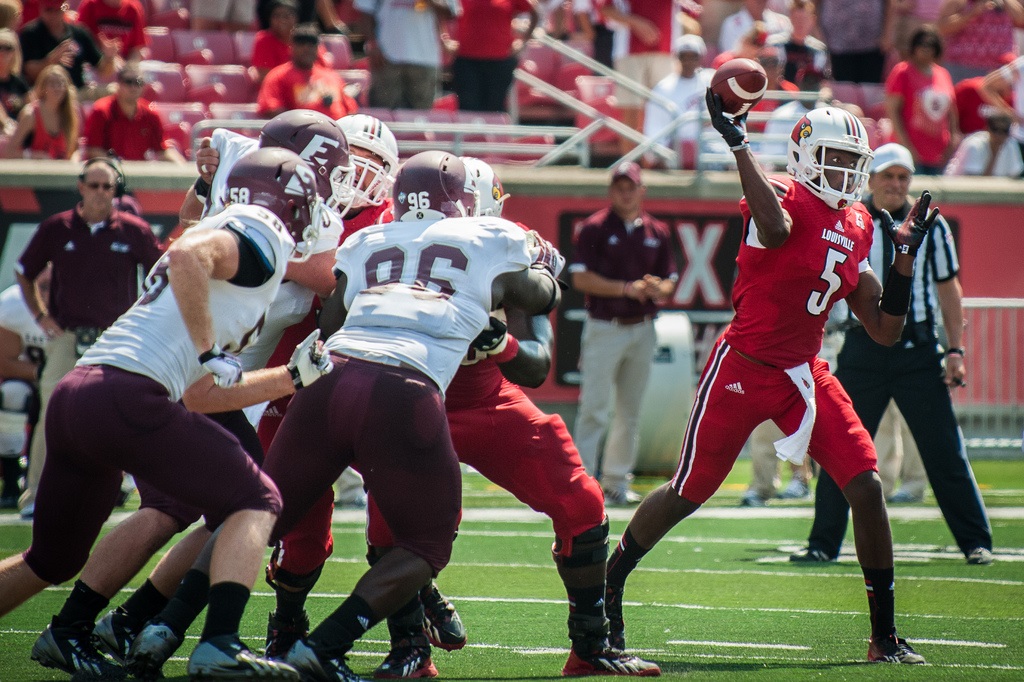This Week’s RLV: A jive turkey worth eating, appreciating Klook, a spec at sea, Cyrille Aimee, and tree houses.
Listens
[youtube=http://youtu.be/Nt7UBKF1BQI]
Views – Unbelievable Tree Houses
For more, including an invisible tree house, check out Higher Learning
Welcome
If you’re new to the Rookie Scouting Portfolio blog, welcome. Every Friday, I post links to things I’m checking out when I’m online. You may not like everything listed here, but you’re bound to like something. It’s also my chance to thank you for reading my work and encourage you to follow the RSP blog and buy the Rookie Scouting Portfolio publication.
For those of you new to the Rookie Scouting Portfolio, the publication is available every April 1. You can learn more about the RSP here. If you want to see samples of the play-by-play notes I take to write the analysis, you can find them here. And to download past versions of the publication (2006-2012), go here.
This month through February 10, I’m offering an early bird discount to those who pre-order the RSP.
In addition to the RSP and the post-draft publication that comes with it a week after the NFL Draft, 10 percent of each sale is donated to Darkness to Light. This organization is a non-profit devoted to preventing and addressing sexual abuse through community training in schools, religious groups, and a variety of civic groups across the U.S.
Here is what the RSP donated to D2L this year. According to D2L, the RSP’s 2013 donation amount was enough to train 250 adults in communities across the country. I will have an announcement about the 2014 RSP next week. Stay tuned.
In Case You Missed It/What’s Ahead at The RSP Blog

- Futures: Fresno State QB Derek Carr – Want to learn about a QB’s mindset? Watch his feet.
- Boiler Room: Penn State WR Allen Robinson – How he can make a good skill immediately better.
- Aspire for the Catch, Settle for the Trap – Marqise Lee demonstrates what Gator Hoskins has to learn. An angle on extending for the ball you might not have considered.
- RSP Rorschach No.2: Davante Adams – This is a beautiful adjustment on a deep post, but did he have to make it?
- Isaiah Crowell – Why he might be the most talented back in this `14 class and why talent isn’t everything.
- Coming Soon: A detailed breakdown of Blake Bortles’ game.
- Coming Soon: What Teddy Bridgewater’s feet say about his game.
- Coming Soon: Discerning starter and superstar vision and agility in a running back.
- Coming Soon: No-Huddle Series – Cal TE Richard Rodgers
- Coming Soon: Senior Bowl Reports (late January) – I decided to apply for media credentials as the RSP rather than do joint work with other groups. You’ll find most of my takes and practice reports here.
Views I – Amazing
[youtube=http://youtu.be/MNCzSfv4hX8]
While it won’t shock me if he comes to his end doing this, I’d be floored if he’d desire to have it any other way.
Reads (Football)
- 2014’s Quarterback Conundrum – Greg Peshak’s analysis at Rotoworld on four prominent quarterbacks in this draft class.
- The Modern QB As Designed By Bill Walsh – Josh Kasparek’s article at Field Gulls is not new, but it’s good and that counts most.
- They Treat You Like Men Here – As a childhood Browns fan I have to post this as much as it pains me.
- Troy Aikman: NFL Pounding Could Take a Toll on Manziel – Someone tell that to 220-lb. Robert Griffin for the 8 millionth time until he gets into his stubborn mule-like noggin.
[youtube=http://youtu.be/8htJVyavMvo]
Reads (Non-Football)
- Burglars Who Took On F.B.I. Abandon Shadows – This N.Y. Times report and/or video is the one thing I’d recommend you to make time to read.
- A Speck in the Sea – This was a fantastic account of a lobster fisherman who survives at sea after falling overboard in the middle of the night. Long read, but a close second to the link above.
- Great White Sharks ‘Live for 70 Years’ – Sharks were my first obsession. H/T to William Del Pilar for the article.
- Eater.com – This site sorts by city and has links that filter to local towns near he city. Good info on food scenes.
- What Perfect Pitch? You Might Be Able to Pop A Pill For That – What I would have given 25 years ago for perfect pitch, but I wouldn’t have taken a pill for it.
- Drummer Kenny Clark – A music appreciation lesson of a jazz great.
- The Electricity-Generating Bicycle That Would Power The World – Fit a Herman Miller chair onto that bad boy and by the end of an RSP season, I’ll be ready for Tour De France.
Views II – “The Jive Turkey”
[youtube=http://www.youtube.com/watch?v=wfQ0QAiqSUI&start=314&w=420&h=315]
I’m considering this for next Thanksgiving with my fried turkey. I want to blow my dad’s mind.
Views III – I Haven’t Watched It Yet, But The Subject Intrigues Me
[youtube=http://youtu.be/6wXkI4t7nuc]




















